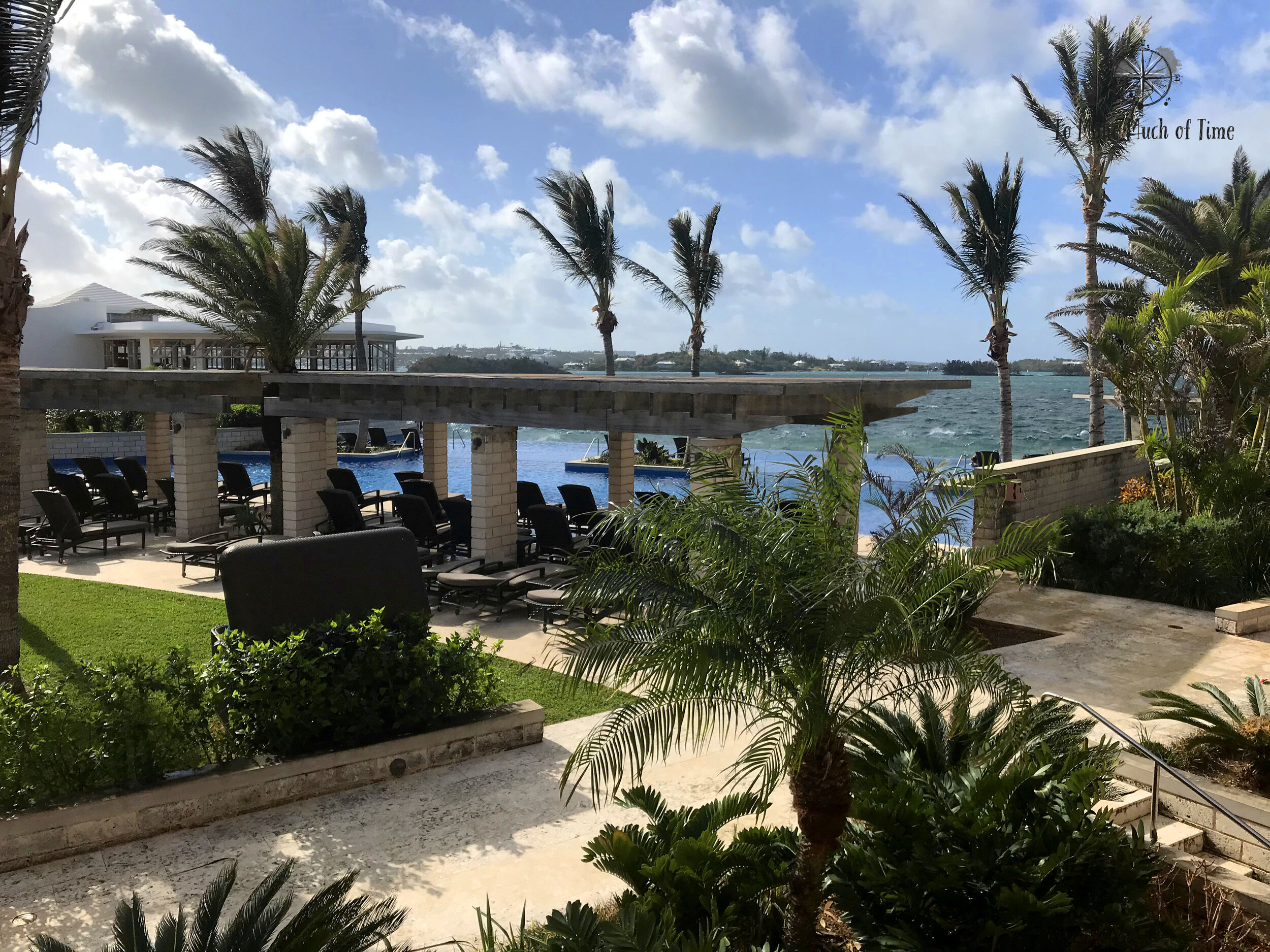Bermuda: Getting Around and Transportation Options
The tiny Twizy looks like a good gust of wind would send it flying. People seem to like them though.
UPDATED: 2/5/2023
Note: Some links throughout our site are affiliate links, which means we may receive a small commission at no cost to you.
Bermuda is just a tiny dot of an island in the middle of the ocean, so transportation around the island must be a breeze, right? It turns out that transportation options on Bermuda can get a little complicated and so planning ahead is a must so that you can enjoy your trip and have easy access to whatever is most important to you.
In this post, we’ll cover the general lay of the (is)land and the various spots you may wish to get to and from, the transportation options available to you, and tips and lessons learned to help you plan accordingly.
the layout of bermuda
Bermuda is about 25 miles long and averages less than a mile wide, coming it at just under 21 square miles in total. Getting from one end of the island to the other via road is approximately a 2-hour journey (via bus).
Hamilton, the capital, is pretty much right in the center of the island. In the map below, look at the elbow in the yellow road just below the letter “B” in the country name, and that’s where Hamilton is located. The airport is across the narrow white road causeway headed up towards St. George’s.
Some of the main destinations in Bermuda are at opposite ends of the island: we visited UNESCO World Heritage site of St. George’s; at the opposite tip of the country is the popular Royal Naval Dockyard. So, for those who plan on touring spots on the island (as opposed to beach lounging), having a transportation plan is important.
transportation options in bermuda
Cars: Believe it or not, renting a car is not an option. Bermuda only allows residents to drive cars.
Car-like: The closest options to a car for those wishing to rent their own vehicle are either a scooter or Twizy, a tiny 2-seat vehicle. Before immediately saying oh yes, sure, sounds great, please read the section below on the driving conditions in Bermuda.
Bus: The island has a very organized, color-coordinated, and easy-to-use bus system (more details on that below). The main bus terminal is located in Hamilton, which means catching buses from there is easy. For those staying in off-the-beaten-path spots, the limitation is that to get to different parts of the island, you may need to catch a bus to Hamilton and then another bus to the next stop. If you’re planning on touring the island via bus, your best option is to book a place to stay in Hamilton. You can find the bus schedule here.
Taxis: We took a taxi to/from the airport. As in just about any location, this is not the most cost-effective option and due to the nature of the road system, outside of typical taxis locations (airport, etc.), it’s not reasonable to expect one will just happen by when you need it and scheduling them or waiting for one to show up may not be the best use of your time.
Ferry: The main ferry terminal is located in Hamilton and has routes to different terminals throughout the country. The ferry is a much faster way to travel than via road so when you can easily access a destination via ferry, it is likely your best option. Note that not all routes run with frequency or at all during off-season. During our late November trip, the ferry from Hamilton to St. George’s was not operational. You can find the ferry schedule here. Always have a back-up plan: if the seas get rough, the ferry will be cancelled. This happened to us once and we had to find the local bus stop for our return trip. An upside to the ferry is that it is a fun way to get out on the water and see the country’s shoreline. Some ferries run around sunset, so you could even plan to get in a bit of a sunset cruise.
road conditions in bermuda
We read about this before going, but only in visiting did this really come to life for us. Bermuda’s roads are not the most forgiving, which is why it is a good thing that non-residents cannot rent cars. I also did not feel comfortable renting a scooter or Twizy . . . and we were there in off-season, which is less crowded than when many people visit. So, what makes Bermuda roads less than ideal?
The roads are teeny tiny with barely enough room for two vehicles to pass. Most of the country has no sidewalks and on one side of the tiny roadway is a wall and on the other, you’ll be crowded in by passing vehicles, including the massive buses that take up every inch of their lane.
Just because there are no sidewalks, doesn’t mean you don’t have some people trying to walk along the roads to a bus stop or another destination, so you have to keep an eye out for pedestrians, especially tourists who assumed they could walk places. And oh yeah, the roads are full of twists and turns so whatever is around the next corner is anyone’s guess!
Bermuda’s weather is exactly like what you would expect for an island in the ocean - completely unpredictable from minute to minute. Because of frequent and sudden rain showers, the roads are often slick and those on scooters end up drenched.
Driving appears to be an aggressive affair. All of the rides we took - bus and taxi - were whirlwinds of zipping around blind corners, slamming on the brakes, and huge buses tailgating scooters. Bermuda has a significant number of horrific accidents of all its vehicles, not least of which are tourists who underestimated the conditions.
bermuda’s bus system
The bus hub in Hamilton was a busy hive of activity even in the off season.
We found Bermuda’s bus system to be easy to use and a great way for us to get around the island where the faster option of a ferry was not possible for the route. Here are some tips and tricks for the bus system.
The routes and system:
The Bermuda bus system is extensive with many routes and options. Any of the major roads will have multiple routes to get you where you’re going. You can view the current schedule here.
We found that using a physical bus schedule brochure was easier than trying to view the maps on our phones. We were able to get one easily at the main bus terminal in Hamilton.
There is a color-coded method to bus stops to ensure you get on a bus headed in the correct direction. Bus stops have poles that are either pink or blue. Those that are pink are headed towards Hamilton; those that are blue are headed away from Hamilton.
If you plan on using public transportation (bus/ferry) to get around, we highly recommend staying in Hamilton since all routes start/end there. Otherwise, you’re more likely to have to take multiple buses to get to your final destination.
Ticketing:
This was probably the most complicated part of the bus and ferry system (both use the same ticketing). The options range from purchasing individual tickets or tokens or books of them to getting a multi-day pass (which is the more straightforward option that we’d recommend. For the multi-day passes, the options available were 1, 2, 3, 4, or 7 day passes. In our case, we got a 3-day pass. If you choose to purchase individual tickets or tokens, it is more complicated figuring out how many tickets you need for each trip. Bermuda’s bus system is divided into different bus zones and traveling through more zones costs more. If you travel further than 3 bus zones, you have to use a 14-zone pass. Again, getting a 1 or multi-day pass helps you avoid all of this.
You can purchase ticket from the bus or ferry terminal in Hamilton.
Time considerations:
The bus system is for tourists and locals alike and so has as many stops along the way as its passengers need. Your best bet is to allow extra time if you have a reservation or the like.
In our experience, traveling from Dockyard to Hamilton on the bus took just under an hour. A separate trip from Hamilton to St. George’s took just under an hour.
Tips for Tourists:
If you take a ferry, ensure you understand how to make the return trip by bus since ferries can be cancelled if the sea becomes rough. This happened to us, and we hadn’t anticipated that the ferry could be cancelled. Luckily, the bus system is so extensive that it shouldn’t be a problem to find an alternative.
In our experience when the bus got to stops popular with tourists (the aquarium, caves, St. George’s, etc.), the bus drivers helpfully called out those destinations so that visitors wouldn’t miss the stops. If you are worried about missing a stop, it certainly wouldn’t hurt to let your driver know your destination. In our experience, the drivers were incredibly friendly and helpful and patient with people trying to figure the system out.
Click image below to save this post to Pinterest!
Check out our other posts about Bermuda:
Need more to read?
Check out our other posts!















